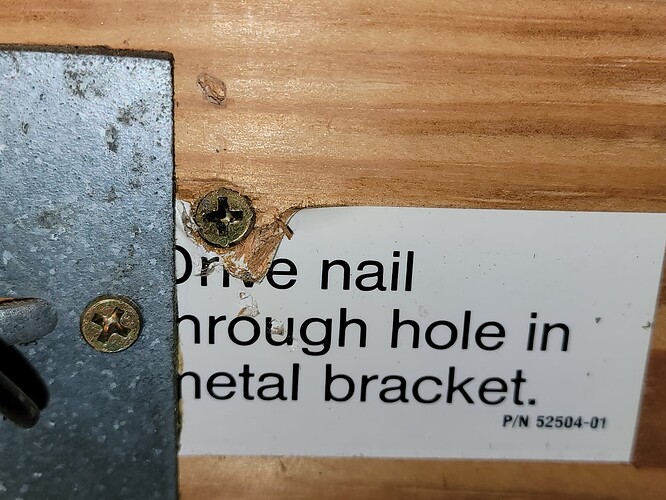Good thread
And yet another installer who didn’t or couldn’t read. But I’ve gotta give credit where credits due and say the rest of the installation was spot on, which is unusual for wooden pull down stairs.
It can be a b*tch to pound in those types of nails.
That may be, but the nails should be installed for good reason.
Need to get yourself one of these Ryan. ![]()
![]()

Sweet! An electric hammer!
The screw has much less effective shear value compared to the nail the vendor specified.
Same for seismic. Nails are the standard for a reason.
Other than people who can’t read, those stairs are literally money sucks. In effect architects can’t read in specifying them.
Another common example of the flat-or-lumpy conundrum is an attic that’s perfectly insulated except for one small area, say the pull-down attic stairs. We can go through the same steps as above and show that an attic that has a uniform R-30 over 99% of the area and 1% at R-1 (the pull-down stairs) will have an average R-value of 23.
That’s right, those pull-down stairs can decrease your overall R-value by 25%. One small uninsulated area reduces the R-value dramatically.
I wish these were required. It would also help cut down on the insulation shower and mess when accessing attics.
I’ve seen these also and they seemd to be decent for insulation. Todays pull down was in a garage that wasn’t insulated above.

One wrong step and you could break that in half. It looks like it would work good for insulation, but just another obstacle that we would have to maneuver and possibly replace if damaged… ![]() .
.
The bubble material is cheap, and has an effective R value of somewhere between R0 and R1.
Yeah, but better than that would be a properly designed attic hatch with
a stiff frame, interlocking insulation, etc. The foam coffin is still subject to air leaks
as the top part distorts or changes shape.
From the amazon link I posted. Still not great, but better than nothing.
SAVE MONEY
Having a 15.3 R-Value and a major HVAC efficiency, it will help you to recover your investment just in a few months from the purchase; If you want to cut household costs, for sure you should insulate your attic access door
another obstacle that we would have to maneuver and possibly replace if damaged….
In my area, we typically have anywhere from a 12" high to 20" high insulation barrier around the scuttle hole already. The problem is that the door/cover is down inside the barrier, so it tends to collect insulation on top of it. The nice thing about the one I posted is that the cover is up high.
The nice thing about the one I posted is that the cover is up high.
I don’t disagree with the insulation being a pain in the ass. I have done my fair share of sweeping and cleaning up after I opened the access. I think it’s a great idea for homeowners, but just another PITA for inspectors. ![]()
I have 3 attic hatches in my house. I went to HD and bought R-10 4x8 foam insulation boards, I then took the hatches and used them as templates and cut out 5 squares for each hatch, I then glued them together then glued them to the top of the hatch. I then installed a foam seal around the perimeter for the hatch to sit on to prevent leakage around the edges.
Now my attic hatches are R-50.
I have done my fair share of sweeping and cleaning up after I opened the access
I used to put an old sheet down covering the clothes in the closet and another coving the floor. Then just gather them up and shake them outside, refold and stash away for another use later.
From the amazon link I posted. Still not great, but better than nothing.
If you believe the Amazon claim, I have a bridge and some snake oil listed for sale also…



